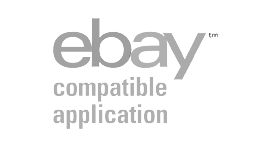If youre a company that is looking to integrate your sales data to your accounting system, there are a few main points that usually determine the type of integration needed. If a company is a pure retailer, then General Ledger integration is typically the right approach. For companies that are true multi-channel and sell not only to consumers (B2C) but also to other businesses (B2B,) the system that is the item master tends to drive the decision toward transaction based integration.
The following simple chart makes it easy to determine the type of system integration a company needs:
General Ledger vs. Transactional Integration
General Ledger Accounting Integration
General Ledger Integration is used when a company only needs to capture relevant summary data from a sheer dollars and cents standpoint. General Ledger integration works well in the case of a pure retailer, who typically manages item, inventory, supplier, and customer data in a computerized point-of-sale system. The accounting system is used to capture sales, cost of sales, sales tax collected, and cash receipts, but only does so through the creation of a general ledger journal entry. In this case, a journal entry is made by entering the data from a Z-Report automatically and is great time saver for the company. They no longer have to dedicate resources to this tedious task of hand keying all of the data from the point-of-sale system to the accounting system.
Transactional Integration in Accounting
Transactional Integration really means capturing sales data from multiple channels via a transaction that is created in the system used to master the data. In most cases, companies that sell both to B2B and B2C will use an ERP system to manage their business. The ERP becomes the foundation for all item, inventory, supplier, and customer data. Items are created here and then published to other systems, such as point-of-sale, eCommerce, and B2B ordering systems.
Transactional integration differs from Z-report GL integration by creating an actual sales transaction in the ERP system. This can be done for every sales transaction that occurs in the point-of-sale or by creating one sales transaction for each Z-report that includes every item sold for that day. The key here is that the hybrid retailer / wholesaler can not only capture sales data, but now also inventory data. This provides the company complete visibility into their inventory levels in only one system. Before utilizing transactional integration, this same company would have to go to each system to compile all of the inventory data before analyzing the data to make purchasing decisions. Additionally, transaction level integration also allows for inventory transfers between warehouses and stores, inter-store transfers, purchase orders and inventory receipt transactions to flow between ERP and point-of-sale.
In either case, companies benefit from eliminating redundant manual entry, increased accuracy, and greater visibility. Integrated companies can now focus on managing the data instead of managing the processes in place to compile it.







Join The Conversation